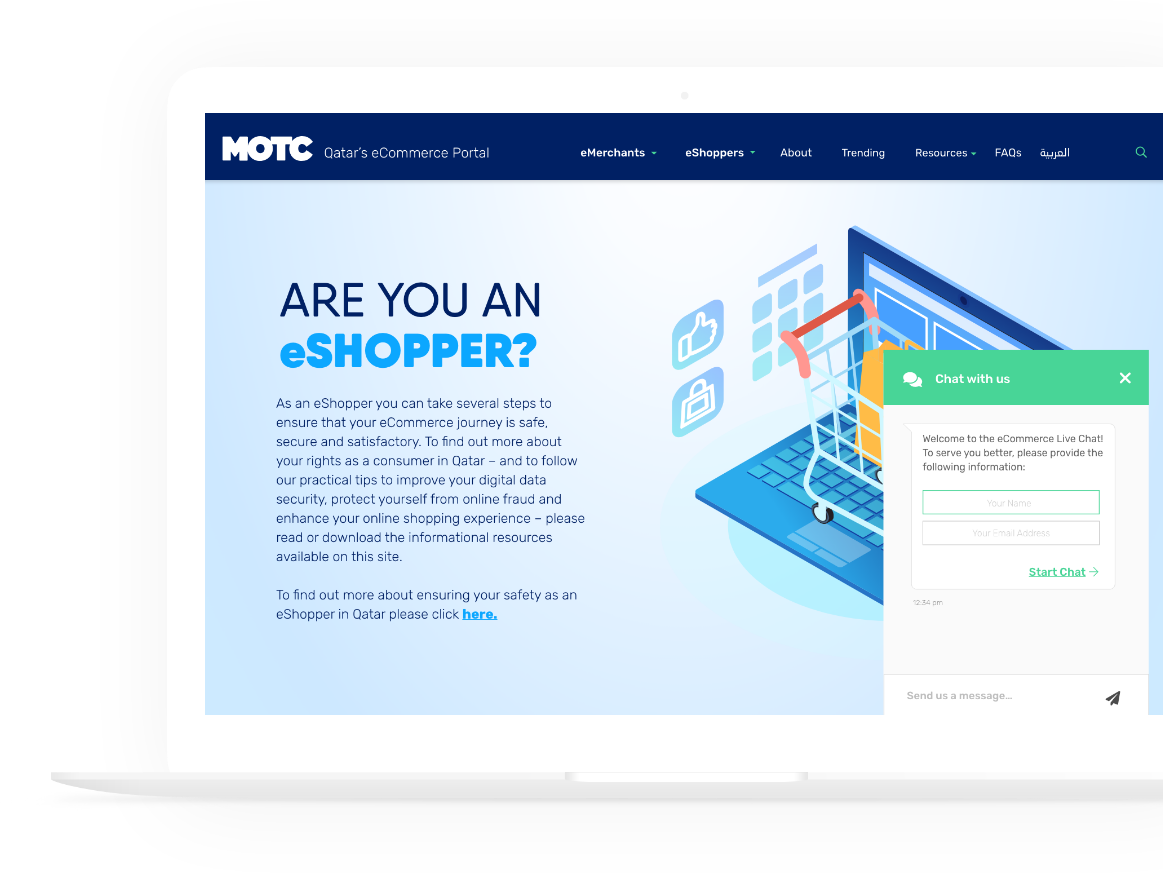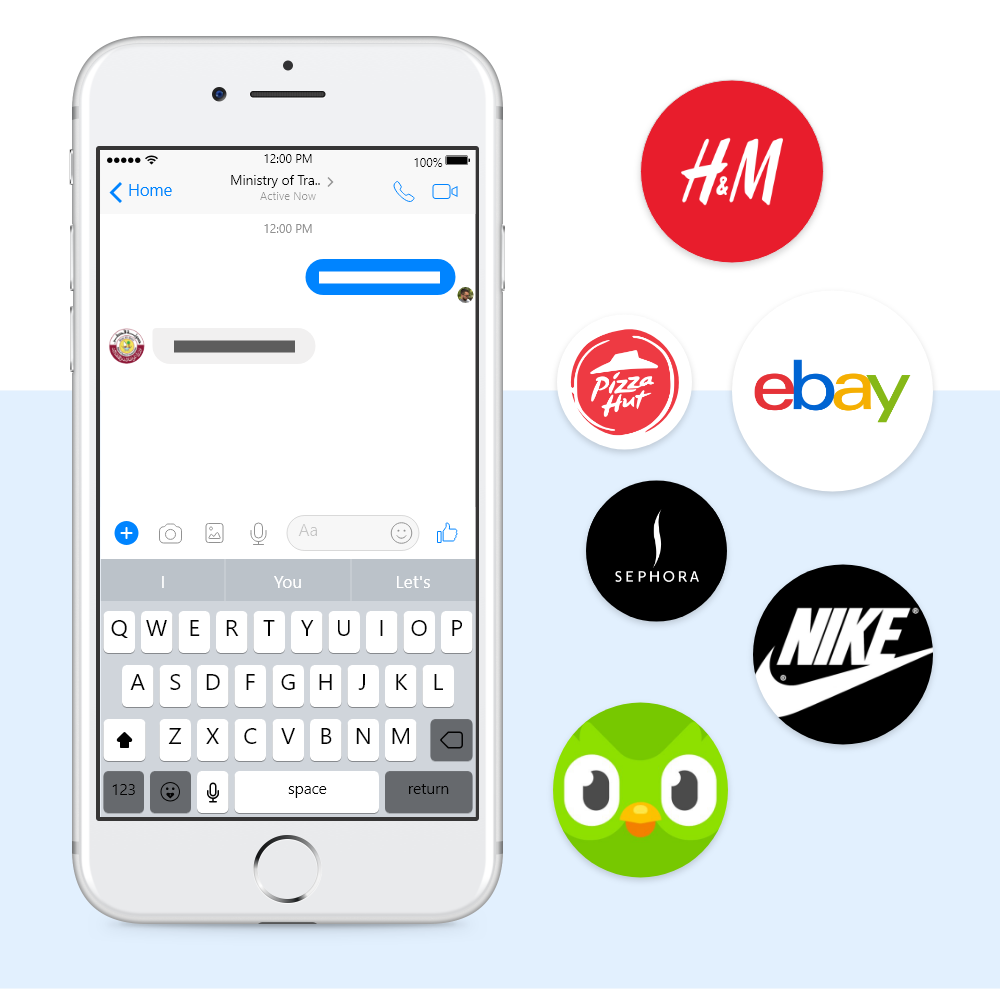How Chatbots Will Transform Your eCommerce Experience
A chatbot is an automated computer program that allows instant communication with eShoppers seeking information about your product or service, providing them with an accurate automated response – with no human involvement on your part.

Game Changer

Chatbots allows eMerchants to interact with their customers any time and to respond to a wide range of requests and queries almost immediately. It’s an exciting innovation in the eCommerce space – and for eMerchants who need to be instantly and accurately responsive to their customers, chatbots are a complete game changer.
Global eMerchants like H&M, Pizza Hut, Sephora, eBay, Nike and Duolingo have all introduced chatbots to engage with their customers and to drive sales. Each case is different, and each chatbot is personalized. Like customers, no two chatbots are (or should be) the same.

By communicating with the
customer at the sharp end of the
eCommerce conversion funnel,
chatbots can provide additional
information to customers who
might otherwise leave the site
without making a purchase.
Common Chatbots

The most commonly used chatbots are those you’ll find on websites (an imbedded chatbot on an online portal) and social media platforms (for example, though Facebook Messenger). They can either be rule-based chatbots, which are basic and only respond to specific commands and cannot react to complex requests; or chatbots controlled by Artificial Intelligence (AI), which do not have to respond to specific commands only, can understand language and can become smarter through real-time learning from their ‘conversations’ with users.
The Benefits of Chatbots

High-quality customer service
Acting as an informed sales agent, chatbots perform an automated yet highly personalized service requiring no direct human involvement, offering quick turnaround to customer queries.
They can provide after-hours support and – unlike humans, who can only focus on 3 to 4 things at a time without making errors – a chatbot can have multiple simultaneous conversations and accurately address several requests at once, significantly reducing mistakes and enhancing performance of your eCommerce website.
Chatbots can perform an automated yet highly personalized service
Upselling and cross-selling capabilities
Chatbots can be highly effective sales tools, informing eShoppers of sales and special offers, upselling by recommending a better version of a product a users is searching for, cross-selling by proposing outfit combinations or combinations of similar products – and even recommending products that fit within a certain budget.

Chatbots can suggest a better version of a product a customer is looking for or propose outfit combinations or similar products
Preventing shopping cart abandonment
By communicating with the customer at the sharp end of the eCommerce conversion funnel, chatbots can provide additional information to customers who might otherwise leave the site without making a purchase, support shoppers who might have a question before making a purchase decision, and they can also ‘nudge’ or encourage a shopper to make purchase.

Chatbots can contribute significantly to the reduction of cart abandonments, a perennial challenge for eMerchants
Chatbots can be rule-based, only responding to specific commands; or controlled by Artificial Intelligence (AI), meaning they can understand language and become smarter through learning from their ‘conversations’ with users.
Providing information about products and policies
By using chatbots, eMerchants can provide or steer customers towards their terms and conditions, such as returns, refunds, delivery times and costs. Chatbots can also share the expected time of replenishment when items run out, provide more information on product uses or benefits and provide alternative options for certain products that may be out of stock etc.

Chatbots can provide customers with additional information about your websites products, terms and conditions and privacy and delivering policies etc, thereby reducing queries and comebacks
Ensuring customer engagement
Chatbots can engage with a customer as soon as they open your website or app; they can ask customers what exactly they are looking for, or support them with a specific request. Chatbots can also ensure customers remained engaged with your platform in a unique and satisfactory manner, which will ultimately result in more sales.

Chatbots can engage with a customer as soon as they open the website or app
Cost and time efficiency
Interacting with a chatbot to obtain info is quicker and more convenient for most customers, and they can reduce the average time taken to respond to customer queries. Cheap to acquire and easy to install, Chatbots can handle a large number of users at the same time – at far less cost than the number of customer service agents needed to support the same volume. By using chatbots, this budget can thus be spent on staff to fulfill other responsibilities.

Chatbots can reduce the average time taken to respond to customer queries and significantly reduce costs in this critical area of eCommerce
The challenges of using Chatbots

Despite their many advantages, chatbots also bring some disadvantages that eMerchants must be aware of, such as:
They require simple and specific questions
Chatbots are limited to their programming, and cannot be flexible or ‘think outside the box’ when responding to customer requests. They also do not know that the same answer can be used for different questions and all questions directed at chatbots must be in context and based on the most common simple, pre-programed customer request scenarios.

Chatbots cannot ‘think outside the box’
No human touch
Chatbots cannot answer personalized questions and many online users do not enjoy the impersonal nature of dealing with a chatbot and still prefer to deal with a human agent. A human agent can provide better and more detailed advice on a product or purchase than a chatbot, can support and guide customers with issues towards a purchase decision. Spelling mistakes or language issues may also not allow the chatbot to recognize or respond to questions that they might actually have an answer to.

Many online users still prefer to deal with a human agent rather than a chatbot.
Unplanned scenarios
Because chatbots must be pre-programed to provide support, eMerchants won’t necessarily be able to provide enough pre-programmed answers to questions, which may lead to the loss of a sale or customer. In such cases, customers may become frustrated by the extra steps required to obtain information, or may not know what to do if they need to reach a human agent. Customers may also become annoyed or decline to make a purchase in cases where they are required send an email or call a hotline instead of being assisted immediately and directly by a chatbot.

Unsatisfactory interaction with a chatbot may lead to a lost potential sale
When and how to set up chatbot

Before you install chatbots, you need to define your goals and use-case scenarios. For example, do you want your chatbot to answer FAQs, increase sales, or generate insights?
Then you must define the means. Decide where you want to use chatbots (eg. via your website and/or social media) and whether you require rule-based or AI chatbots. Also, ensure your chatbot has a human touch, such as a name, a personality and a sense of humor. To begin the process, map out your customer journey, build out conversation trees and find the best answers.
You can also add visual components to enhance the user chatbot experience.

Conclusion:
Chatbots are Powerful tools


The most successful eMerchants are those who are instantly responsive when the customer asks questions or needs support. Chatbots reduce turnaround time with customers and are highly cost-effective, making them a powerful tool for eMerchants and one to consider implementing.